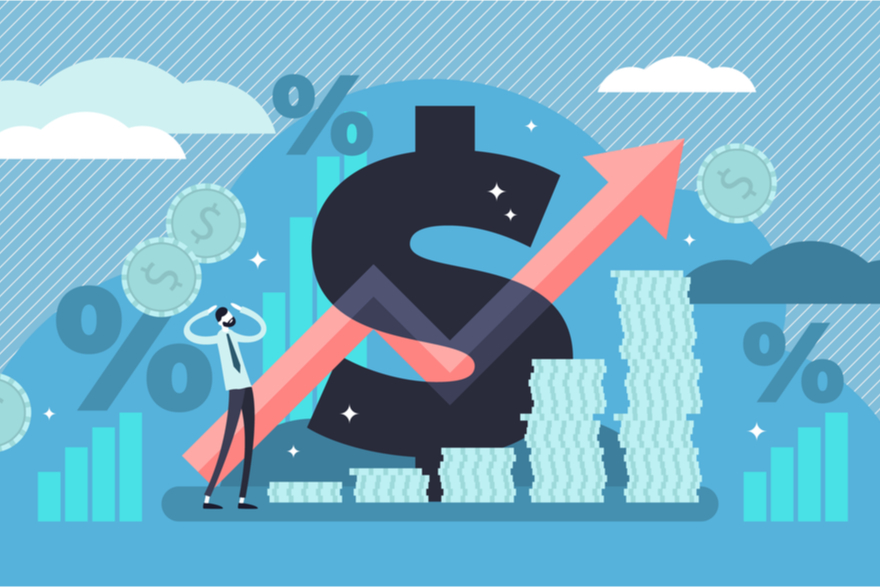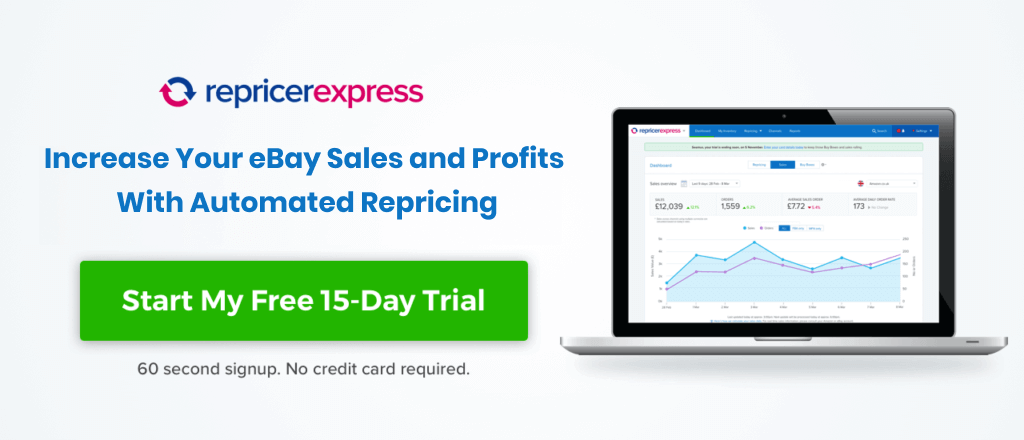Hacks, strategies, tips or techniques — whatever word you want to use, the rose still smells just as sweet. And as you’ll see in this post there are so many eBay repricing strategies you need to be using right now.
1. Avoid Races to the Bottom
One of the best-known characteristics of selling on Amazon is merchants tend to engage in races to the bottom in an effort to secure buyers. On eBay, however, that’s not really the case nearly as much. Yes, buyers are interested in scoring awesome deals, but the nature of eBay is that of a more varied, dynamic marketplace than Amazon.
So to capitalise on eBay’s strengths and work them in your favour, look at your competitors a little differently than with just dollar signs. On Amazon, shoppers will go through listing after listing to find the best deal (and after all, why wouldn’t they? If they’re looking for, say, a Nikon DSLR camera, they’ll probably settle on the one with the cheapest price if everything else is the same. But on eBay, you’ll grab their attention and pocketbooks by being a ‘Best Match’. Eh? Okay, let’s break that down a bit.
2. Becoming an eBay Top Rated Seller
Being a Top Rated seller on eBay is a little like winning the title of best napper in kindergarten, but with different, more grown-up criteria. To get that crown, you’ll need:
- A high feedback score that’s at least 500.
- Feedback that’s at least 99.0% positive.
- An item that’s fairly popular/relevant so it’ll rank pretty highly in eBay search results. Look to sell items with a decent sales history as opposed to new, niche or off-season items.
- A Detailed Seller Rating (DSR) score of at least 4.6. And to top it off, you’ll need this 4.6 to apply across the board on all of eBay’s metrics, not a total average.
So remember how we trashed the practice of racing to the bottom? Well, now that you’ve read this far, we’re going to list a couple of exceptions (and they should be taken as just that, and not as regularly-used practices — really).
One way to use the race-to-the-bottom strategy is if you want to quickly amass positive feedback and/or you’re dealing with hot items that rank highly. In this case — and use this idea sparingly and as a quick boost to jump ahead — then go ahead and reprice the item lower than your competitors’. But realise you’re doing it as a means to an end and you’re sacrificing a bit of profit to attain a greater goal.
3. Work in Free Shipping Whenever Possible
As a frequent buyer on eBay, I can’t tell you how many times I see sellers not offering free shipping, especially for items that really don’t cost that much (i.e. the equivalent of a couple of meals from McDonald’s, a movie ticket or a hardcover novel). I can understand having to pay shipping if it’s a big-ticket item like a TV or lawnmower, but for something like a Mac charger or phone cover? C’mon, sellers, pad that into your price and remove the cost of shipping.
And if you’re still on the fence about it, then use free shipping as an incentive for buyers to spend a bit more. If all they have to do is reach the $20 or whatever mark to qualify for free shipping, then do it! More than half of eBay sellers offer free shipping and without looking at each seller’s account, I can offer a pretty good estimate that the free shippers probably have more customers and sales than the ones who don’t.
4. Don’t Sell Your Item Short
Imagine two in-person shopping experiences: one at Walmart, and one at a specialised jewellery store. If you’re looking for a bracelet at each, which store do you think you’ll encounter salespeople who can better explain the nuances of what you’re looking for? Yeah, we didn’t think many people would name Walmart as their first choice.
The same goes for your product descriptions. The title and price are the first things to catch a consumer’s eye, while the description is what seals the deal. If you’re not thoroughly and adequately explaining what it is about that product that makes it vital in a person’s life, then:
- a) Shoppers won’t be 100% sure of what they’re getting and will be likelier to pass it over, even if the price is attractive to them, and
- b) Your competitors will fill in the blanks and scoop up your sales. Don’t let that happen to you.
5. Lastly, Watch for Top-Rated Sellers and Top-Rated Listings
When you’re setting prices for items, you’ll want to think of several factors. Most of them have to do with supply-and-demand, market prices, the cost of running your business, what your costs/revenue/profit margins are, and what your competitors are listing the same product for.
But another element most sellers don’t take into account is matching top-rated sellers with top-rated listings. The former (which is hopefully you!) appear at the top or on the first page of eBay search results. The latter are usually, but not always, equated with sellers who’ve reached prime status by virtue of either being prime sellers or having prime prices.
Take careful note of that because when it comes to repricing your goods, those are the prices you’ll want to be playing against the most. If you’re a superstar eBay seller, you can get away with charging a little bit more for the same product because buyers will trust your reputation more than the not-as-well-rated but more-cheaply-price Joe down the street.
Final Thoughts
We do apologise for not being able to list every single eBay repricing strategy—if we did, you’d be reading a novel instead of a blog post from RepricerExpress. But on a bright note, one of the best, quickest, easiest and most effective hacks you can use is repricing your eBay and Amazon listings with RepricerExpress. And why do we think so highly of it? Well, because you can kick things off for free for the first 15 days, that’s why.
Related: eBay Repricing Software 101



